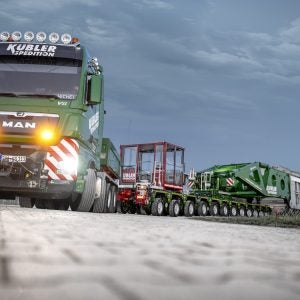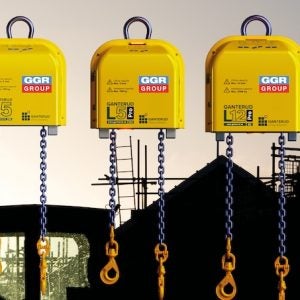A coroner’s inquest into the January 2007 accident, at the Elysian Fields development, found no fault on the part of the manufacturer, Jaso, or the crane owner, Falcon Crane Hire. HSE principal specialist inspector Geoff Frackleton told the inquest, “This was the proper crane for the job, properly set-up and correctly used according to the European Standards.”
Cranes Today understands that the root cause of the accident was a luffing rope coming off of sheaves, in unusual wind conditions. The crane operator had luffed the jib of his Jaso J138PA back to its minimum working radius. When he went to luff the jib back down, it was held up by a short, powerful , gust of wind. This caused rope used to luff the jib to spool out.
While the gust of wind was likely to have been faster than the maximum permitted, it was so short it did not cause alarms to sound. Regulations on safe wind conditions consider both the wind speed, and the duration of gusts, so a single high speed gust like this does not necessarily mean the crane is working in unsafe conditions.
At some point, the rope came free of a safety bar, close to the point where the rope meets the multiplier. When the wind stopped, the jib fell forward, bouncing on the tangled rope. The luffing rope broke under this dynamic force, and the jib fell forward. It bounced again on installation ropes used to erect the crane.
This created further instability, the force of which sheared bolts in the slewing ring. The crane collapsed, dropping its counterweight, which crushed Zbigniew Swirzynski, who was working below. Swirzynski was killed in the accident, and the operator, Barry Walker, had to be cut from his cab by the fire brigade.
Currently, EN 14439, the standard that covers tower cranes, calls on manufacturers to take measures to prevent ropes coming off of sheaves: this is what the safety bar is meant to prevent. However, Cranes Today understands that the HSE is likely to mount a safeguard action (a request for changes to the standard) calling for this part of it to be more tightly defined.
The HSE is likely to call on the standard to be modified so that slack rope devices must be fitted to cranes. The devices detect when rope is slack, and will stop rope being spooled out, or sound an alarm. In this case, the crane’s operator had no way of knowing the rope was playing out behind the cab. If he had, he may have been able to stop trying to luff the jib down, preventing the accident.
Some experts have pointed out that some cranes may not need the devices, and others may not be able to have them fitted. Currently, the HSE is in discussions with manufacturers and industry figures, about exactly when the devices should be required. It may also recommend that the devices be retrofitted to some cranes.






